In 2014, Robin Hollander explained to us about the work of Weta FX on The Hobbit: The Desolation of Smaug. He then worked on various shows including War for the Planet of the Apes, Avengers: Infinity War, Jumanji: The Next Level and Eternals.
How did you get involved on this film?
I got a call from our executive producer David Conley asking if I could attend a client call and was sent the script so I could have a read through. I couldn’t quite believe what I read, especially the title!
What was your first reaction after reading the script?
I thought it sounded too good to be true! Such a rare opportunity for something totally unique. It felt to me like this could be like an old school VFX project. One CG character, 99% plate photography; there’s beauty in simplicity and this felt like it would allow us that opportunity.
How was the collaboration with Director Elizabeth Banks?
Oh it was an amazing collaboration with Liz! With her, what you see is what you get. She’s an incredibly driven, creative, and hilarious powerhouse of a film maker, and it was a real thrill to be strapped in with her on a whirlwind two year journey. A few minutes into our first call, it felt like we both got each other and had the same sense of silliness in how we talked about the project. We ended up having one or two calls almost every week for the entire two year run that we were working together. I really felt that she trusted me, and I think she knew that I had her back at all stages during the project.
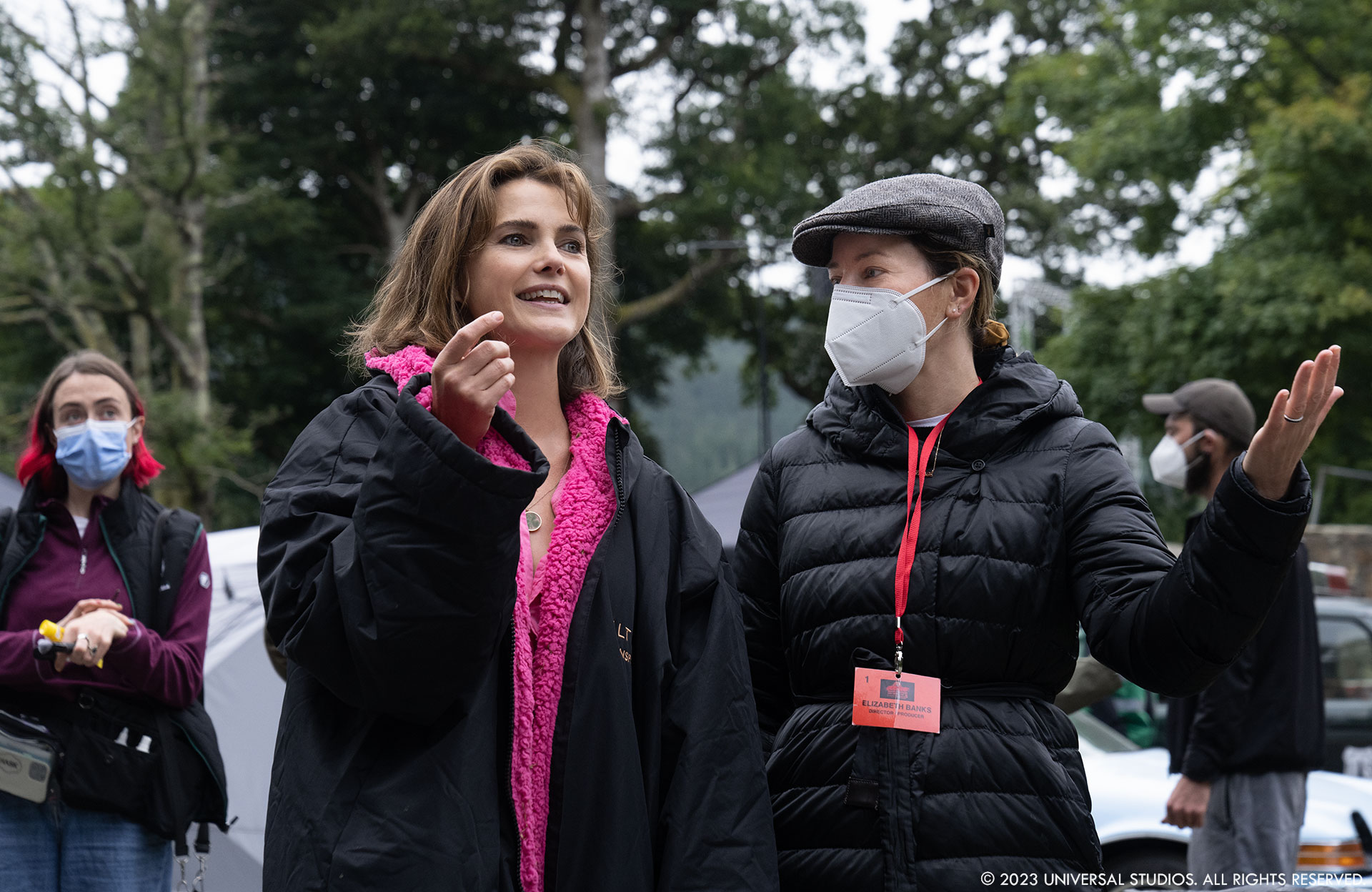
This was her first big VFX feature. How did you help her about that?
I actually think the fact that she was new-ish to big feature VFX work (or rather creature VFX work) was a real blessing. It allowed us to show her our work in a very raw state early on, under the guise of explaining the process to her. That meant she got very hands on with our tech and workflow, which allowed her to trust the process and through that give very clear creative notes early on. And for us internally, it meant that we didn’t always have to wait for something to finish cooking before she was happy to taste it, which sped things up massively.
How did you organize the work your VFX Producer?
We had a fantastic producer in Lily Lawrence, and she had a great handle on all things from our extensive pre-production, which spanned 9 months, to the 40 day shoot in Ireland and through to the end of post, which lasted for 14 months. She was instrumental in building the amazing team we had, and the two of us had a fantastic working relationship. She’s someone who can tell me off and set me straight, and I thank her for that!
What was your approach when creating the bear?
In our first call, Liz made it clear that the bear needed to come across as a victim of the war on drugs, not the villain. So being able to build a bear that could emote to a minute level of detail, was really key. She also stressed that if the bear didn’t look real, then the whole thing would fall apart. So from there onwards we had a very clear vision as to what needs our bear build had to service. We decided that we needed to work in tandem to understand and shape the character of the bear through various rounds of reference gathering and motions tests, etc. while at the same time starting to build a bear that would look as realistic as possible, especially when she was at rest and not doing crazy coked up antics.
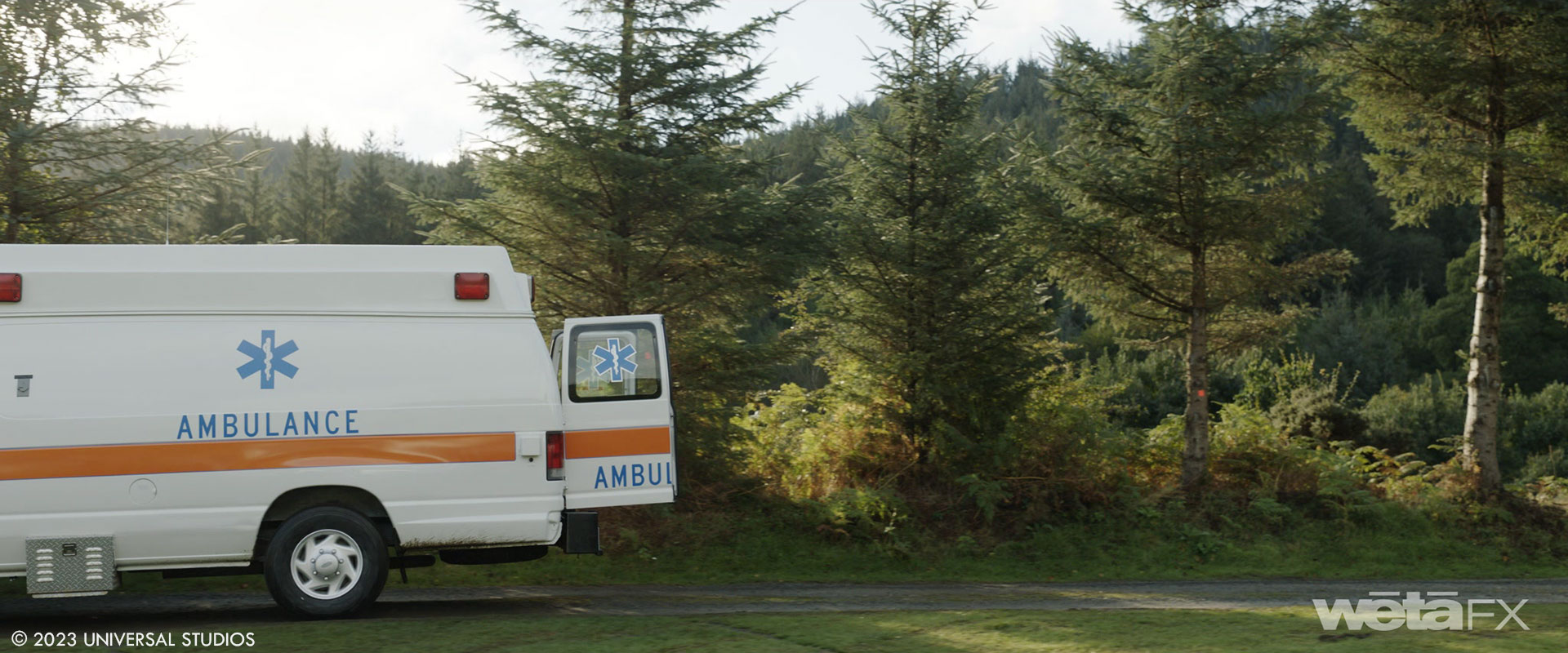
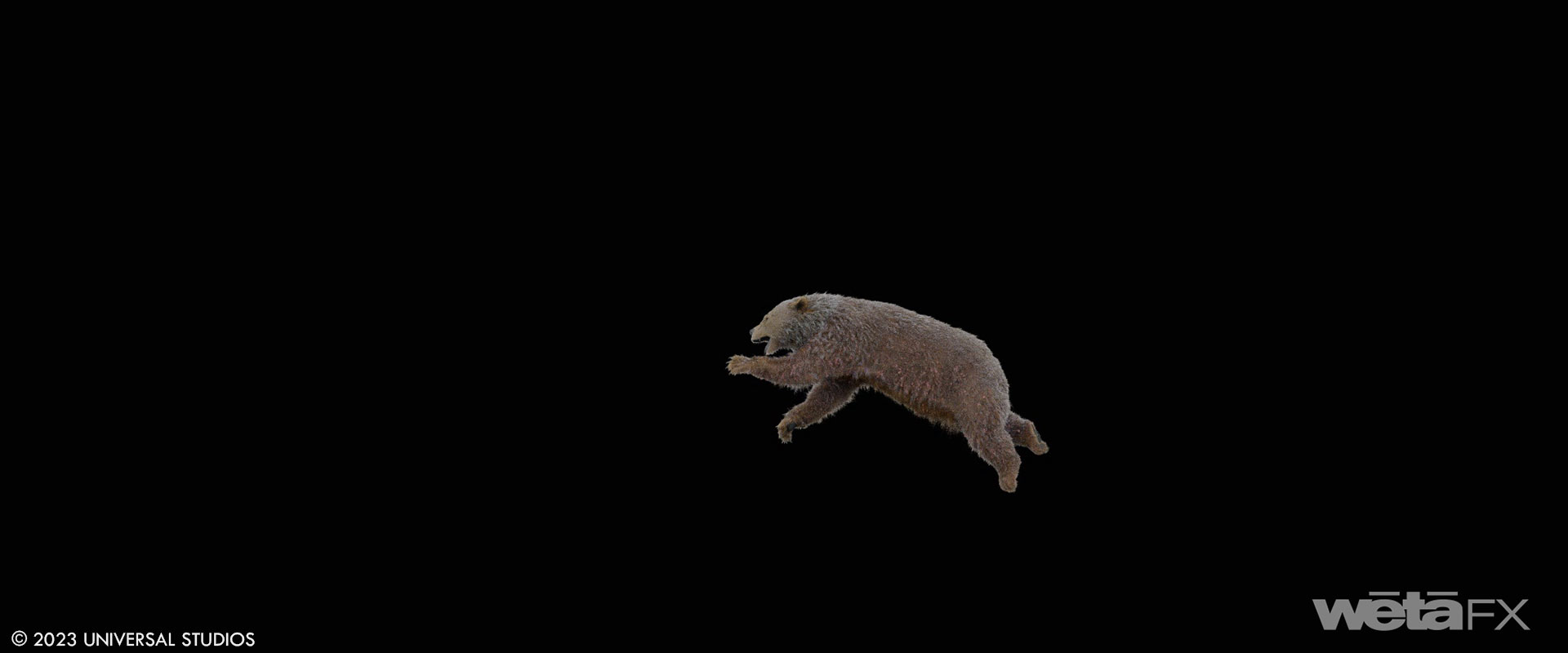
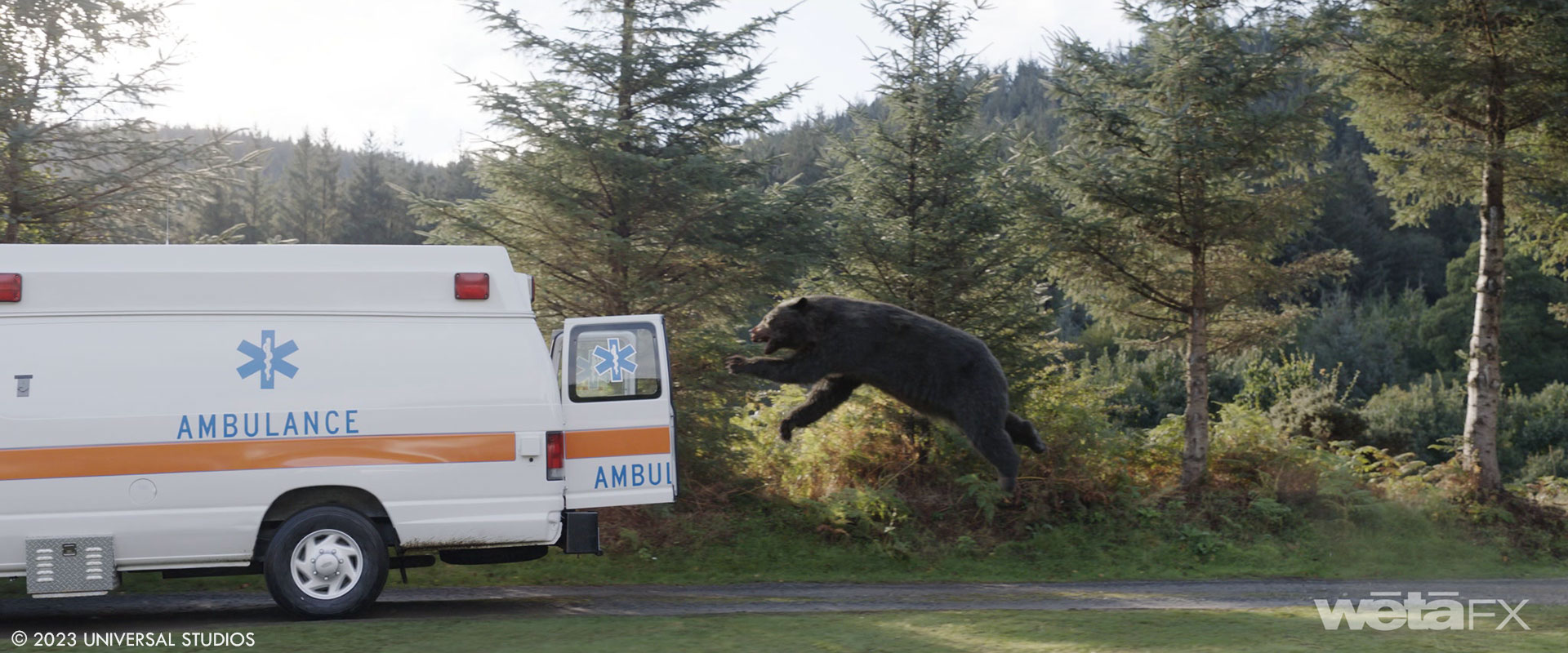
How did you use the great experience of Weta FX with creatures?
By asking lots of questions! My background is in compositing, so I was definitely very vocal about not understanding all of the ins and outs needed to build a bear from scratch. But we have such a vast trove of experience when it comes to creatures, so it was a delightful experience in seeing all the various department bring suggestions to the table. It felt like our build was very modular in a way that we always built Cokey (that’s the bear’s name btw) to the needs of the shots we were working on at the time. So our first few shots were wide establishers, which meant we could get the entire build up to 75% for instance, and start testing it in shots. As we got closer to her, or her actions demanded new features be added to our puppet, we’d make those tweaks and then retroactively update previously established shots if the updates added to the experience. I think this approach greatly helped us in shape the character of Cokey, as it meant we could flesh out scenes a lot quicker and thus get notes and direction back from Liz sooner.
Can you elaborate about the creation and animation of the bear?
The rig we built for Cokey consisted of 214 bones and 98 muscles, which were then coated in fascia, a skinSlab, skin and finally our fur groom. We constantly tuned and refined this combination of layers to ensure Cokey had the right feeling of weight to her. Getting the right amount of jiggle was really important, and through her thick fur we could easily lose some of it. The use of the skinSlab really helped us here as it allows big portions of Cokey’s bulk to slide against the underlying fascia, which in turn gave us a really pronounced low- frequency jiggle when she does sudden movements.
As for her facial characteristics, we modelled a lot of her range and potential behaviour after sun bears, who by their nature look a bit cooked at all times and have some really quirky mannerisms. Using that as a guide we built a rig that could ‘go all the way to 11’, even though we only ever ramped it to maybe a 5 or a 6. For some shots where Cokey had to do a really big, expressive roar for instance, we actually ended up breaking her jaw somewhat through shotculpts, just to fully get the control in the performance that we needed.
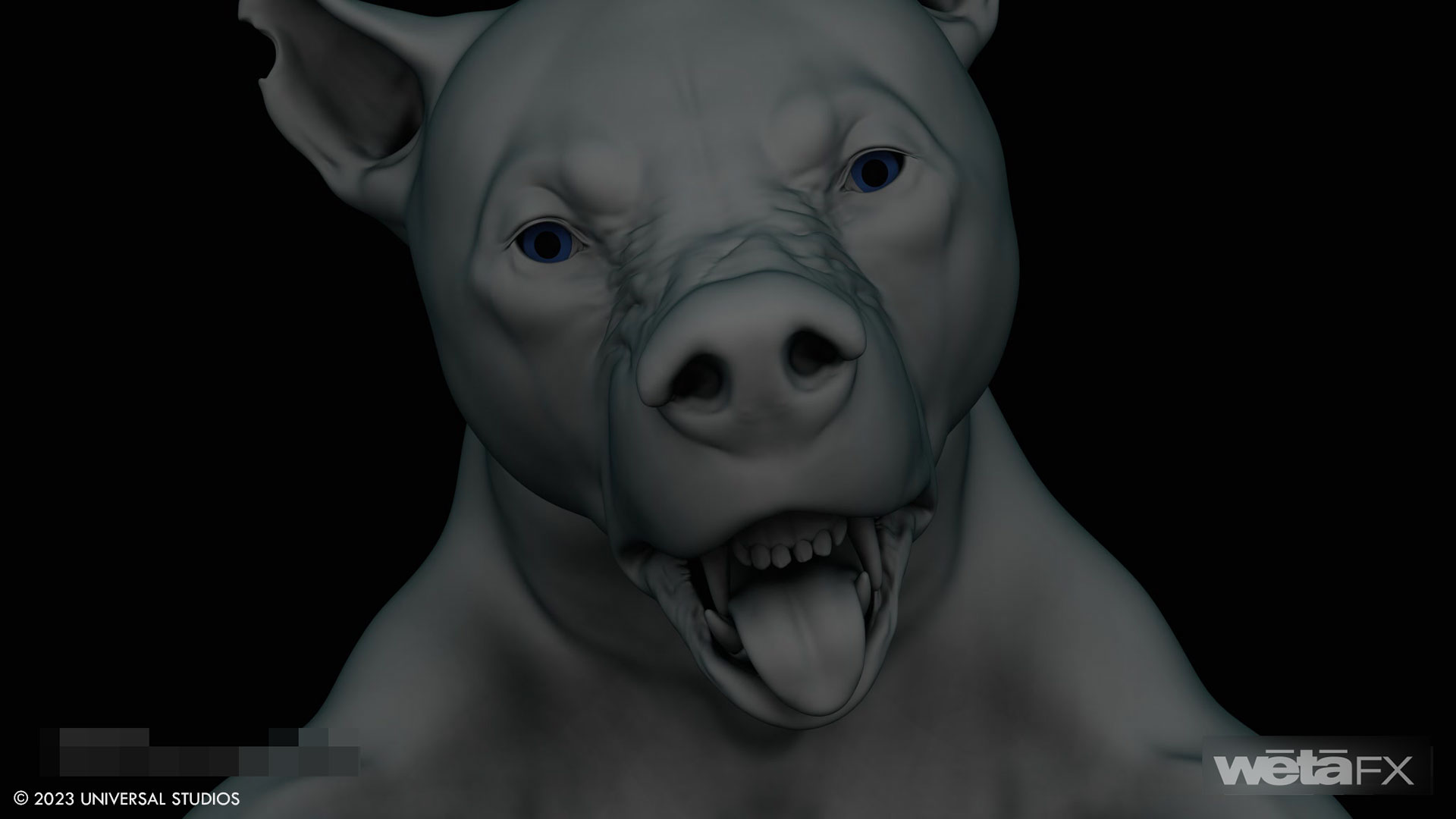
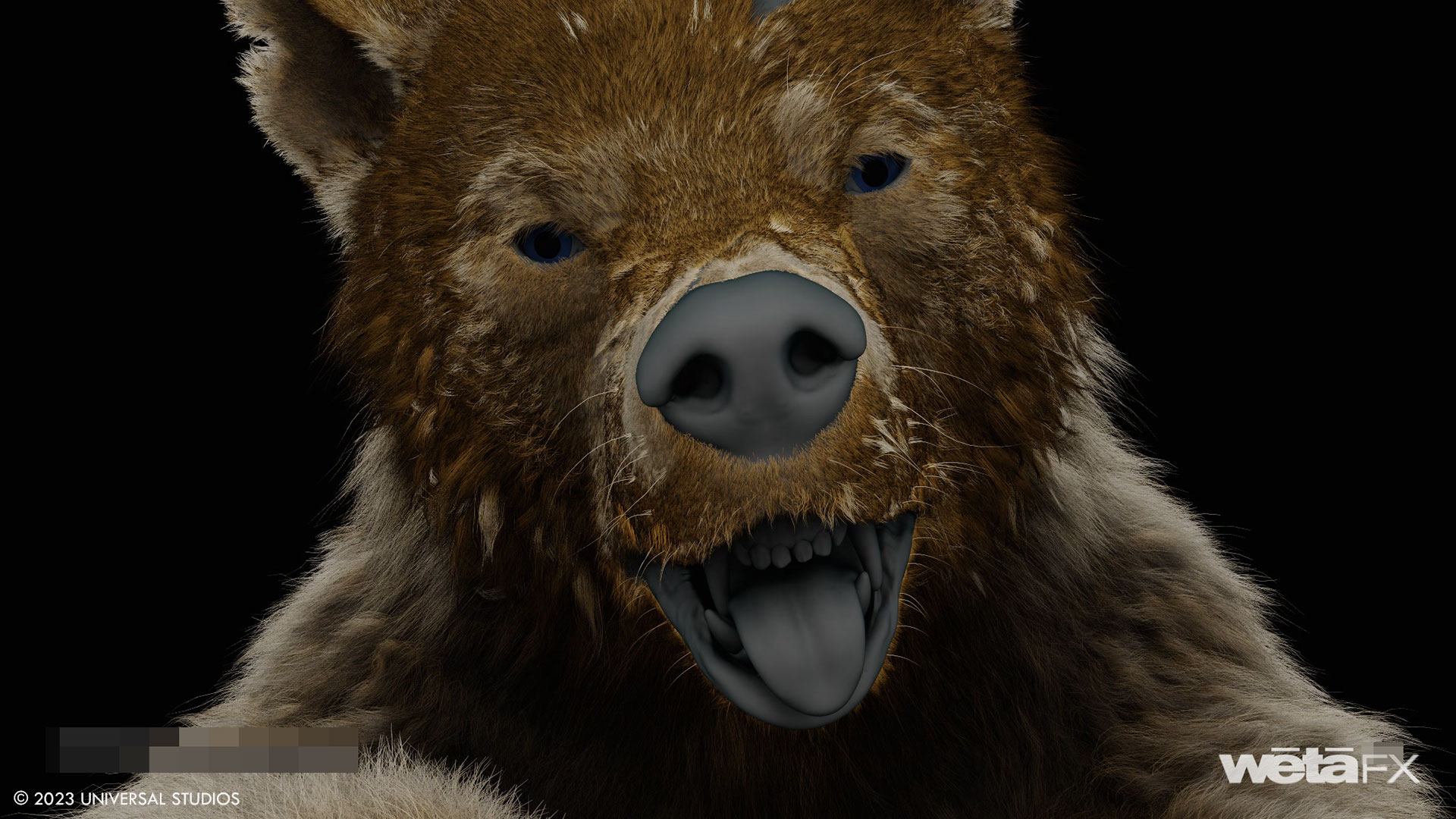
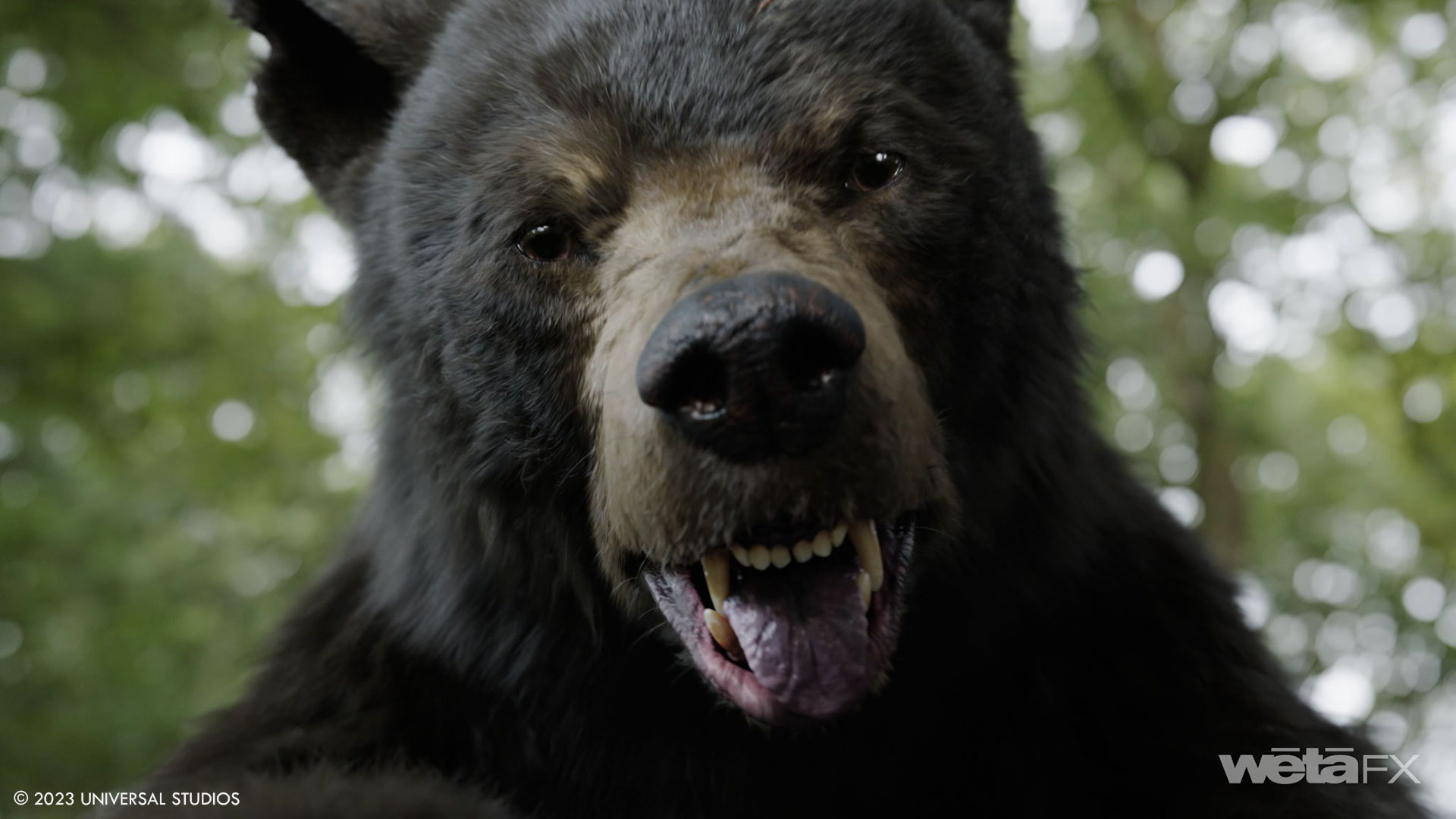
How did you manage the interactions of the bear with the actors?
For the scene in the gazebo where interaction was most crucial, we calculated the difference in circumference between Cokey and our real world bear actor Allan Henry. We then wrapped Allan in some foam to match Cokey’s circumference, then dressed that in black spandex fabric. We figured out that the top of Allan’s head would be roughly the underside of Cokey’s chin, so when he was performing with Alden Ehrenreich on-set, he knew how to position his body so that the proportions and dimensions would align for us in post. Using black fabric also really helped as it meant we had no blue/green colour cast on the our real actors, which in turn meant a nicer extraction in comp.
What kind of materials did you have on set for the bear?
We had an amazing life size bear head courtesy of Weta Workshop, which was built based on a 3D model and ample textural reference that we provided. This not only allowed us to gather real world lighting data, it also meant our DP on-set could frame and light the Cokey bust, and our actors had something representing Cokey that they could use to get in the zone. In addition to this, we had a fantastic VFX data wrangling team that would run HDRIs, ball passes, and survey data/material.
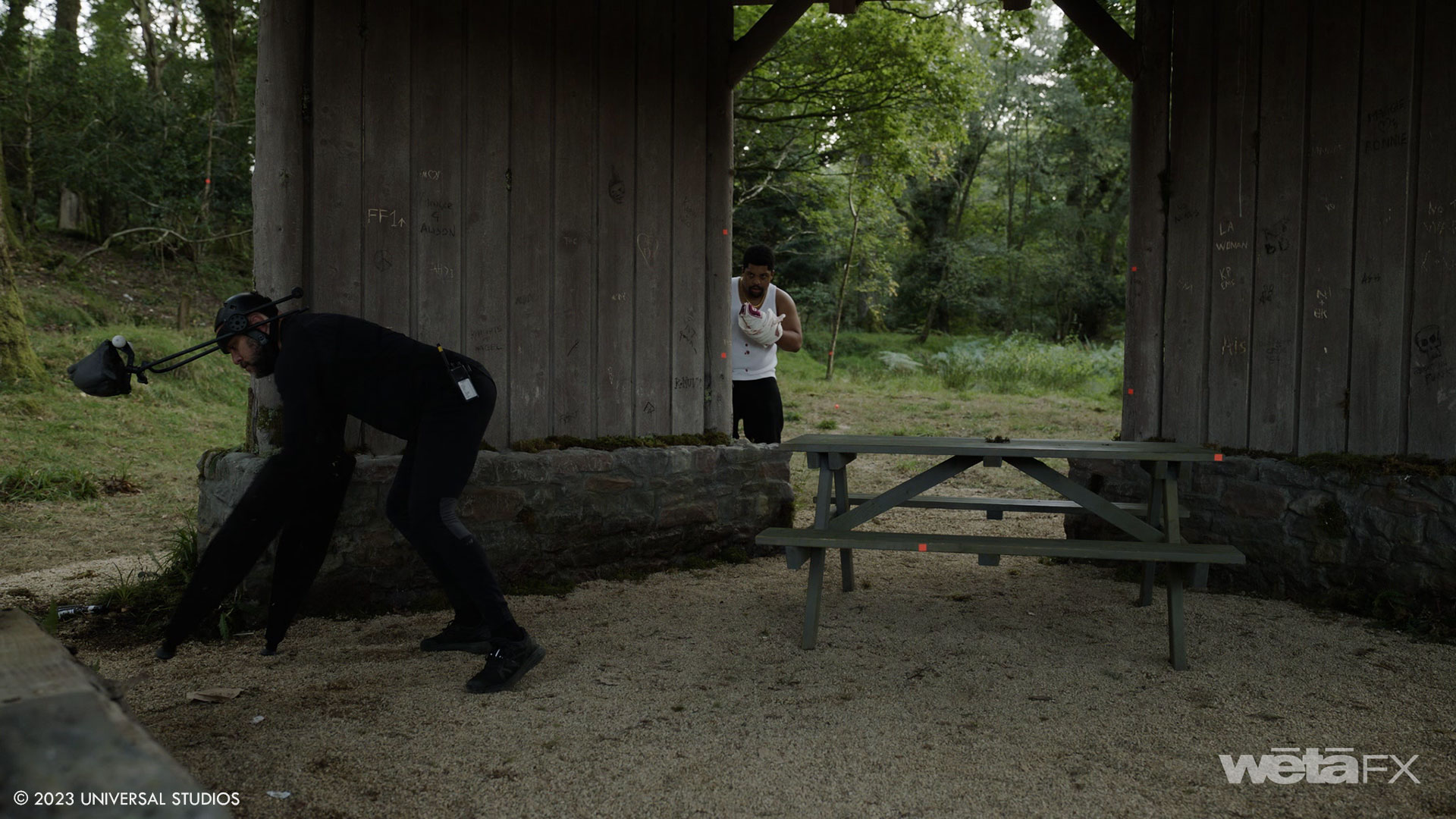
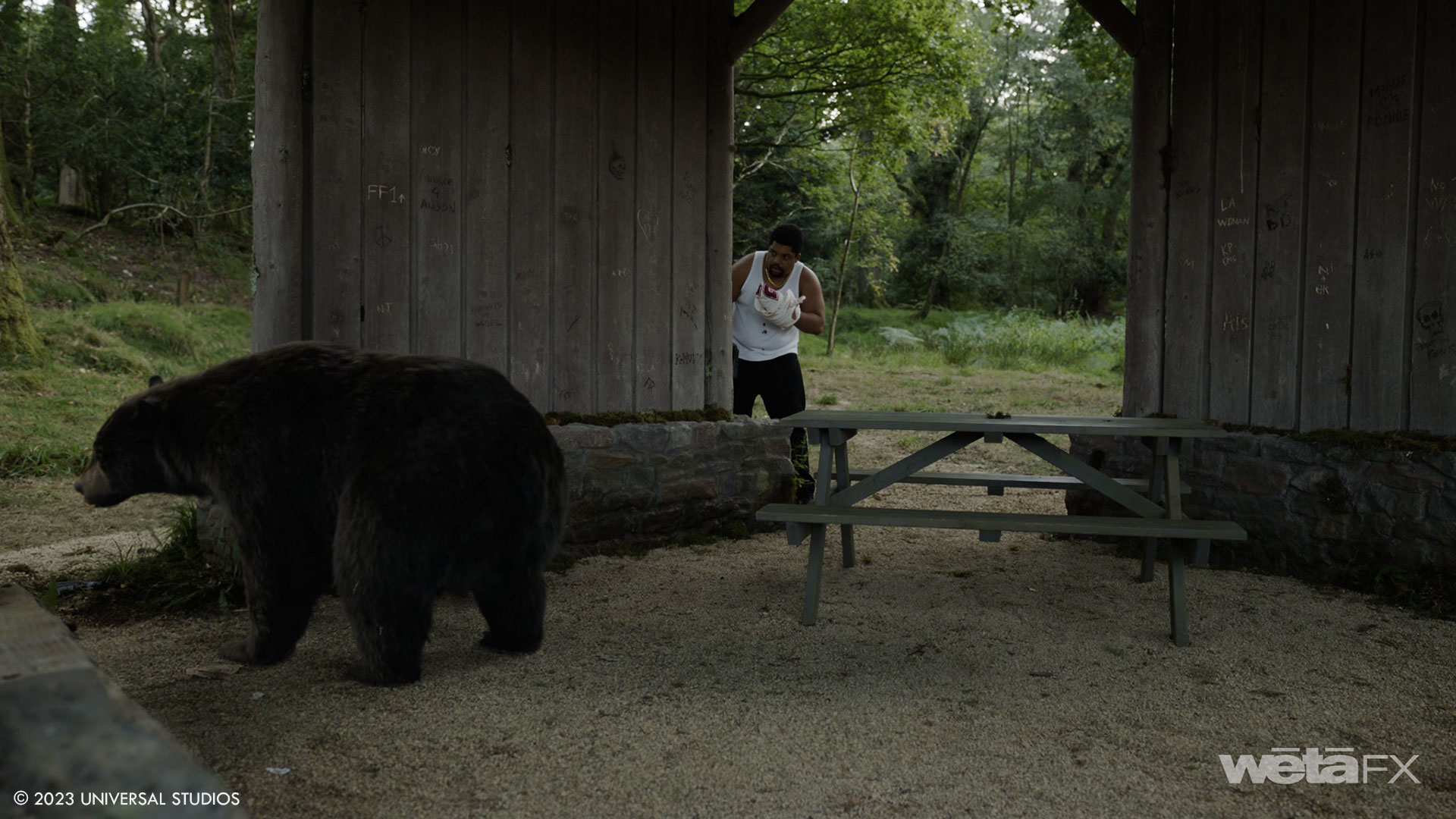
Can you tell us more about the fur and eyes work?
The fur set that we built went from an initial build of just over 880k fur strands to a final build with over 8.6 million fur strands. As mentioned, we started servicing the shots we were working on, and as we got closer and closer to Cokey, we incrementally upped the complexities in her fur, as well as all textural components to cater for some of the extreme close-ups we had of her. The same really applied for the eyes. An initial geometric build would later on get refined, uprezed, and speckled with more detail to amplify the character and soul they required.
The fur goes through many conditions with blood and cocaine. How did you manage this aspect?
All up, we had four grooms with varying states of dry/fresh blood, cocaine, and water. Our stage one groom was Cokey at her finest; freshly shampooed and ready to hit the stage. Stage two added some clumping in her face and head, which was enhanced by fresh and dried blood in the clumped areas. Stage three had more blood and clumping all over, and stage four was her soaking wet. In addition to the groom changes, we had our lookdev artists change the thickness and tapering components of the fur strands in those clumped areas, to both add to the realism and enhance rendering efficiencies.
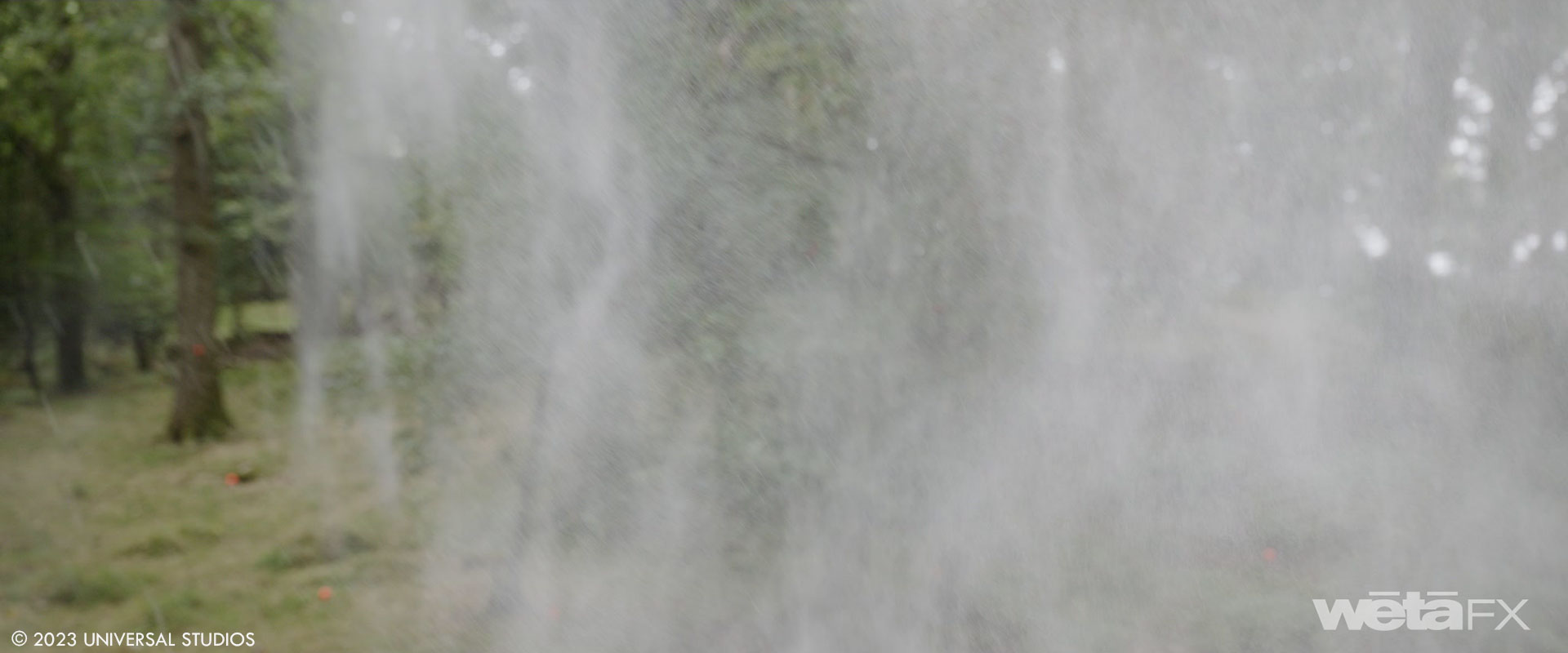
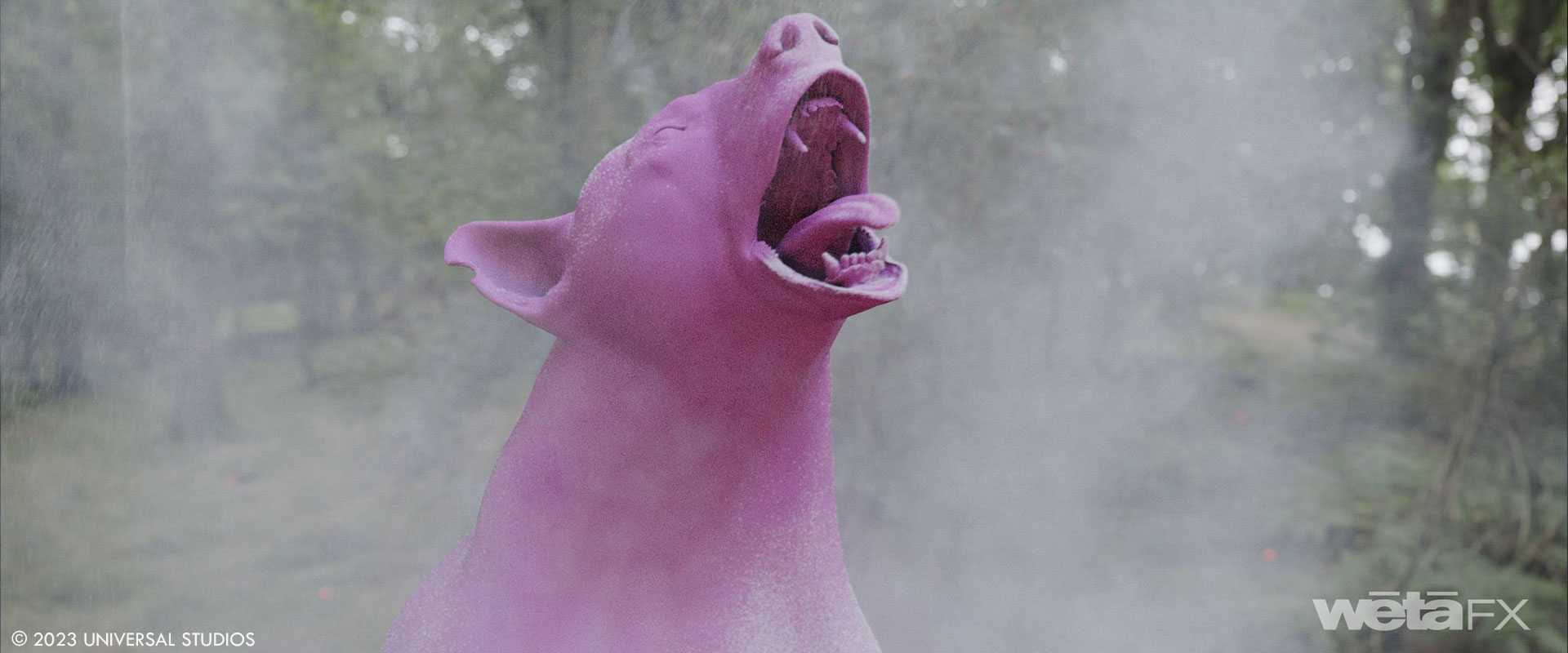
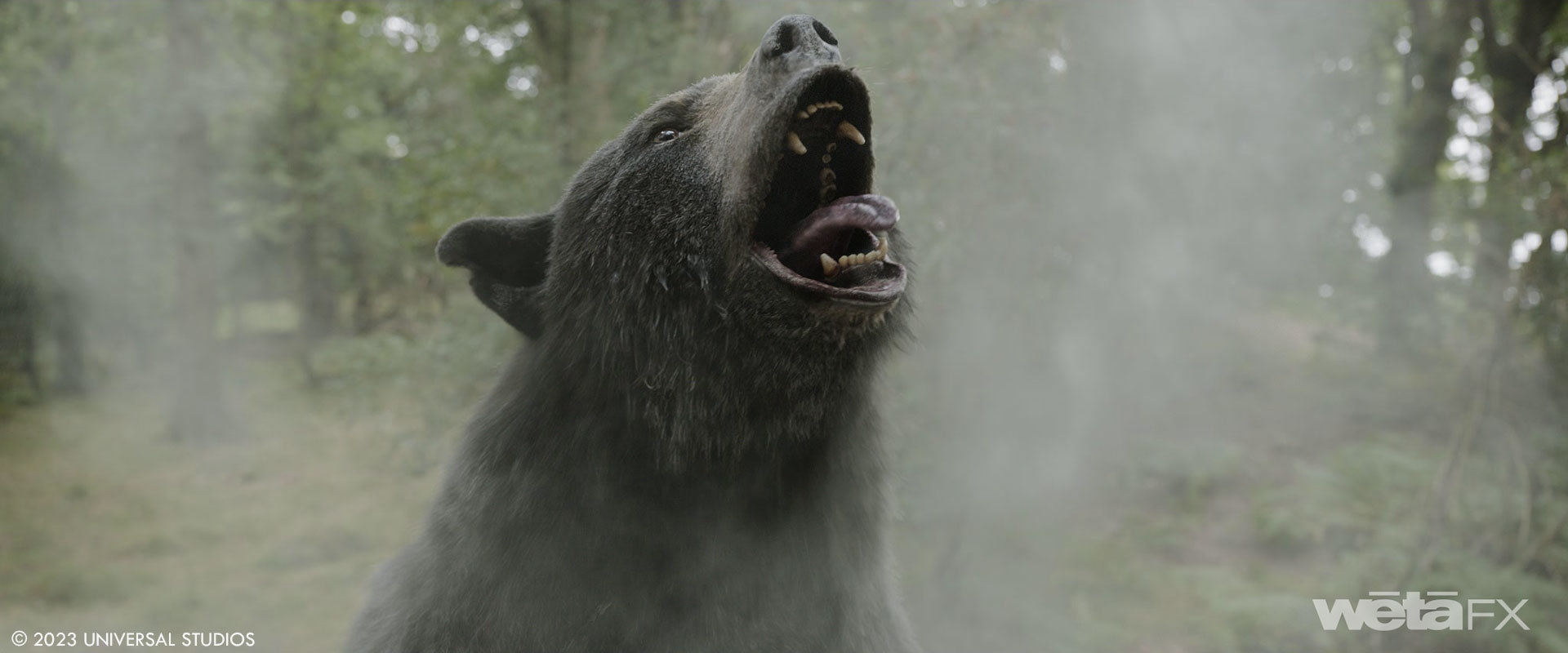
Did you received specific indications and references for the bear animation?
We had a lengthy pre-production period due to the nature of setting up a movie shoot during a pandemic. During that time we spent a LOT of time looking at clips of bears doing everything a bear would do; starting at realistic bear behaviour like walking, running, and climbing. In conjunction with that, we looked at references for what a bear on cocaine could look like. We quickly steered clear of humans on coke as that wouldn’t serve the character, but instead found great reference of sun bears ripping into coconuts, as well as animals coming off sedation at the vet, for example. Throughout the whole project Liz and her team would send us clips that they found and we’d keep rolling it into shots.
What are the tricks in animation to give weight and power to a terrifying bear?
Honestly for me it’s all about the jiggle, and as mentioned before, it can get muted out by all the layers of tissue that were required to give Cokey her subtle movements when she’s not trying to be heavy and fast. On top of that, lighting a black bear in a dark environment can take away even more shape that we were trying so hard to get. To counter that we often had to amp up our animation, which then made the anim presentations look odd and jarring. But Liz quickly realised what and why we were doing it, and the end result made Cokey feel chunky and heavy.
Can you elaborates about the super cute cubs?
Yeah they are cute, aren’t they! I see an opportunity for a stuffed toy here… The cubs were pretty much handled in exactly the same way as Cokey, just to a slightly lesser level of detail. Short of the last shot in the movie, we only ever see them in the dark waterfall environment, caked in cocaine. While the lessons we learned with Cokey were applied the cubs, we couldn’t directly transfer anything over in terms of geometry or shading, so they were both individually built from scratch.
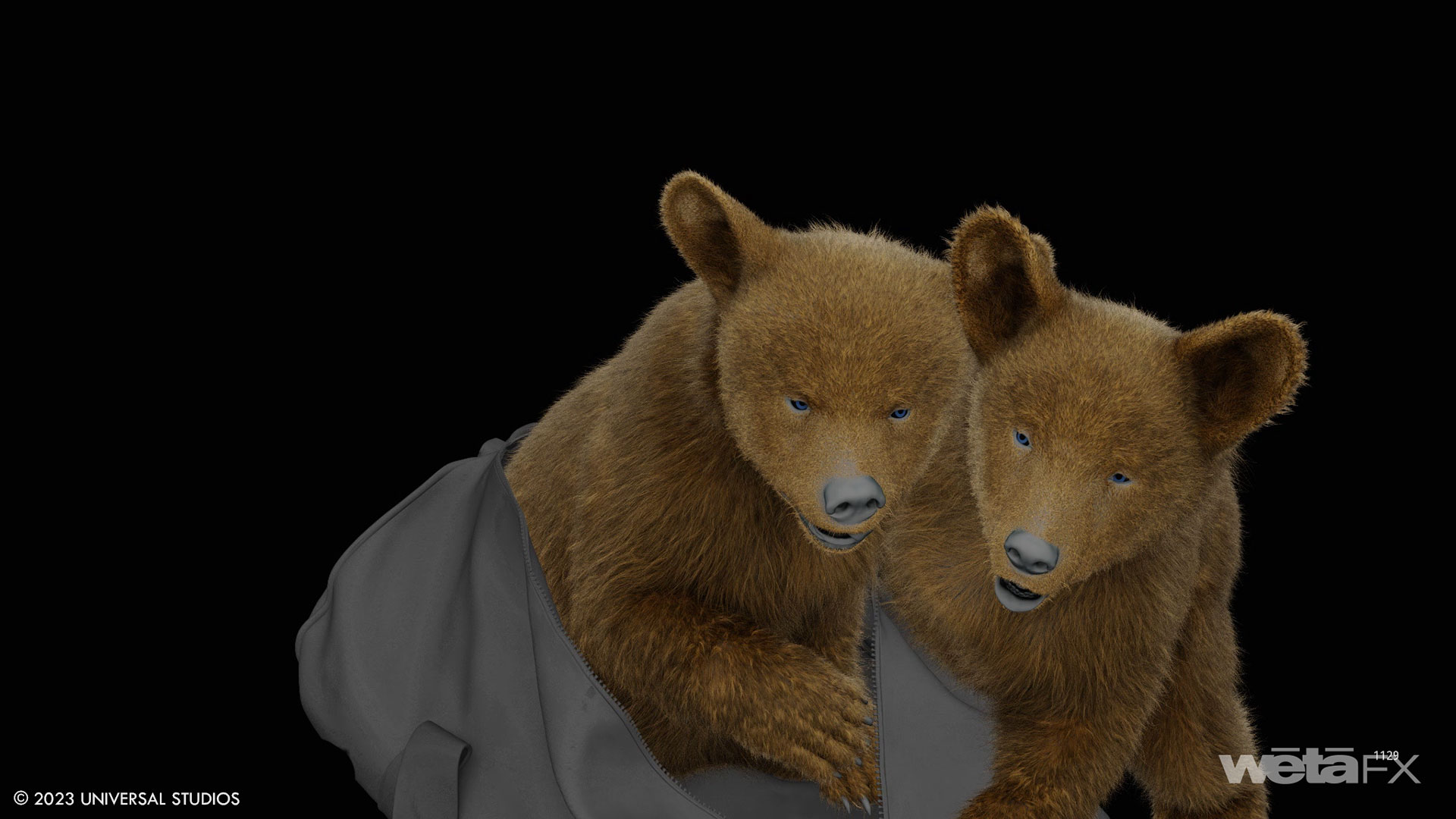
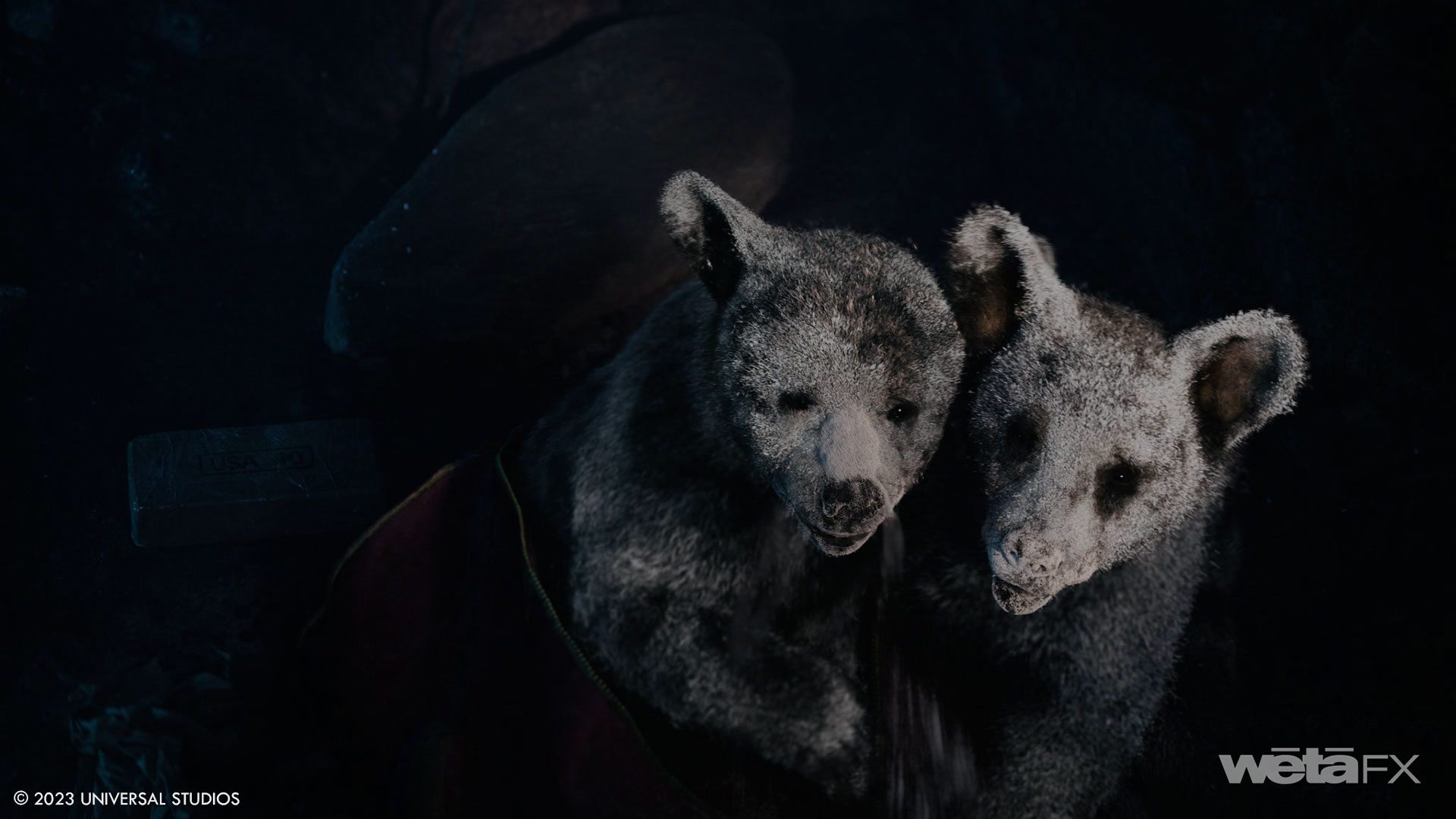
The final sequence happens during the night and close to a waterfall. How does that affect your work?
Yeah, lighting a black bear at night is, umm, a challenge! But luckily we were pretty free to explore classic 3?4 horror lighting with a tight key, so the shots of Cokey above the waterfall really popped. Shortly after, she lands on the ledge itself, gets shot, and falls down into the waterfall, which is where our need for the stage four / wet groom came into play. All the extra clumping and high specular response of her wet fur made it easier to give her a readable shape.
How did you work with the SFX and stunt teams?
So any interactions between Cokey and our actors was handled by Allan Henry, who is also trained as a stuntie. He understands our needs really well, and Liz also fully trusted me on set to get the performance I needed to make it work back home in Wellington. Having a supportive onset team is key for this, and everyone from our 1st AD to our DPP, to the guys out in the catering truck, were fully supportive of our needs and we had ample time to finetune performances on-set. This is not always the case and I’m eternally grateful for the entire crew out in Ireland for this!
Which stunt was the most complicated to enhance?
Probably the one where Beth the ambulance driver goes crashing into the tree. We had our actress on set roll into the end position of the crash, and then reverse engineered the shot. So camera match-moving the real Beth, then anim blocking the ambulance hitting the tree. Once we had the start and the finish we could run some simulations and blocking passes to make a CG Beth hit a tree, fly through the air, and roll in to her final real self. Then it was just the minor task of adding a CG ambulance, glass, tree damage, tree roots getting pulled up, ground interaction, blood, glass in Beth’s face, and Cokey coming out of the back off the ambulance… Easy, right?
The movie is really gorey. How did you enhance this aspect?
Most of the gore was actually handled onset with practical effects, but we enhanced it in post with some subtle blood spurts and smears here and there. I think the crowning moment was the scene with Ray Liotta and the cubs. It was the last day of shooting with Ray and we had 5 minutes left. I half-jokingly suggested we tie a bit of fishing line around the practical guts/sausage hanging out of Ray’s stomach, and Liz went for it! It was tense on set when we filmed it because it was the last take we could run that day, but it just all came together and came off without a hitch. So really, adding a cub in post dragging the guts with its mouth was the easy part.
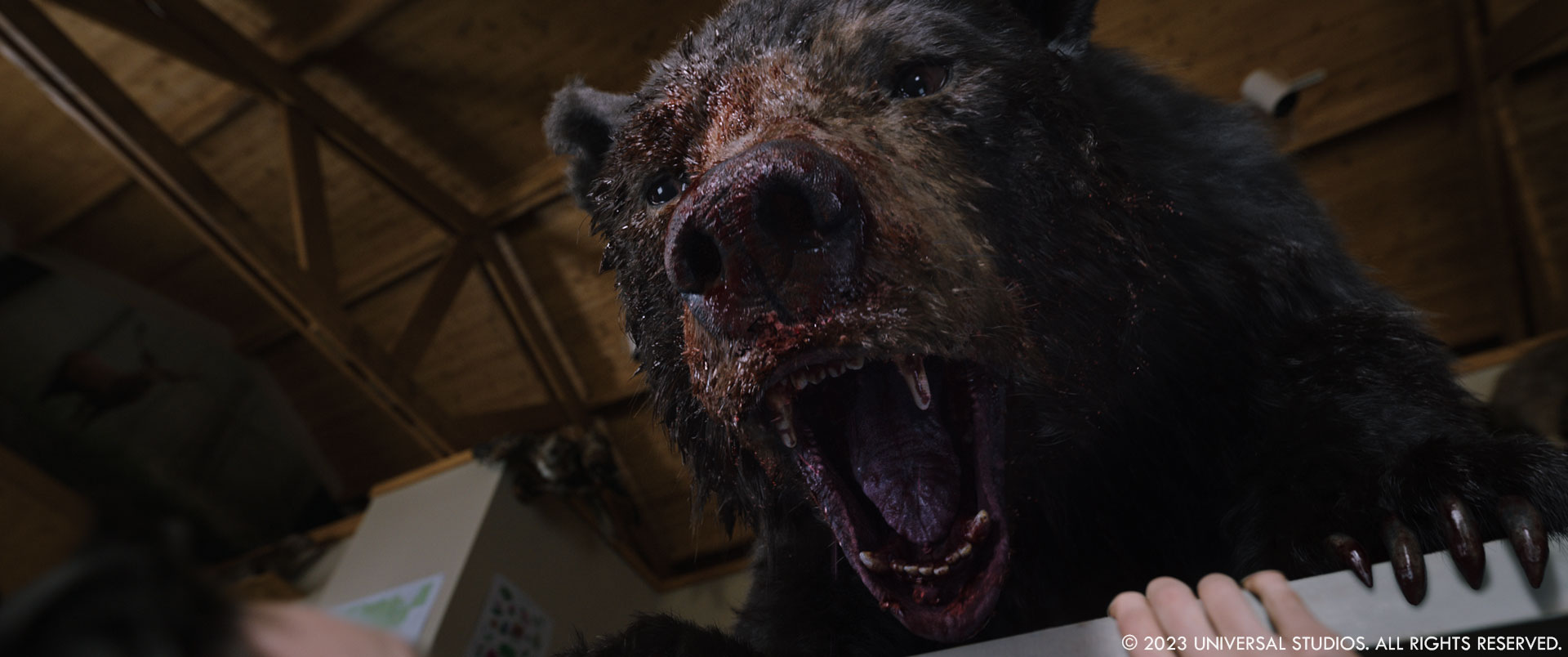
Did you want to reveal to us any invisible or unusual effects?
There was no real bear! ?
Which sequence or shot was the most challenging?
The gazebo sequence was definitely up there in complexity. It’s where Cokey really goes to
town and interacts with our cast. But pretty much most of our sequences played out in bright daylight, so there was never too much darkness to hide behind, which made it all pretty challenging.
Is there something specific that gave you some really short nights?
The waterfall scene at the end definitely made for some challenging moments, mainly around getting shot composition and water simulation technicalities just right. But I’m very happy to say that this show presented almost no sleepless nights, which I think is a true testament to our incredible team at W?t?, as well as our beautiful relationship with Liz.
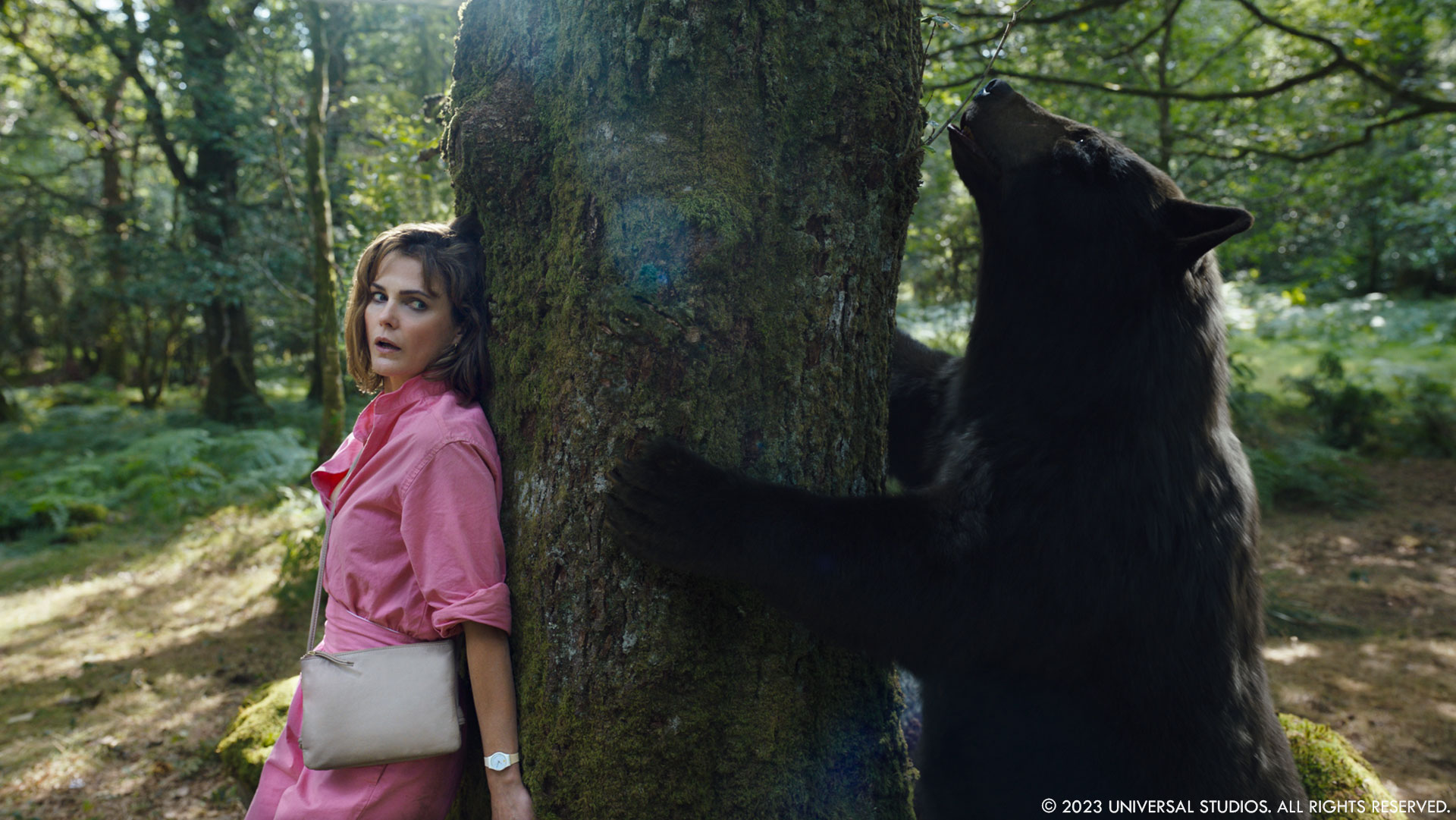
What is your favourite shot or sequence?
The shot of Cokey opening her eyes after getting shot off of the waterfall is up there. I was blown away at the level of detail we managed to add to her face, and seeing that rendered for the first time just made me incredibly chuffed!
What is your best memory on this show?
Sooo many! But shooting a movie with an amazing crew, in the forests south of Dublin for 7 weeks; is pretty hard to beat!
How long have you worked on this show?
2 years and 9 days, but who’s counting….
What’s the VFX shots count?
429 shots in total.
What is your next project?
I’m working on an unannounced project – I can’t say much except that it’s quite the departure from a bear high in the woods!
A big thanks for your time.
WANT TO KNOW MORE?
Weta FX: Dedicated page about Cocaine Bear on Weta FX website.
© Vincent Frei – The Art of VFX – 2023




